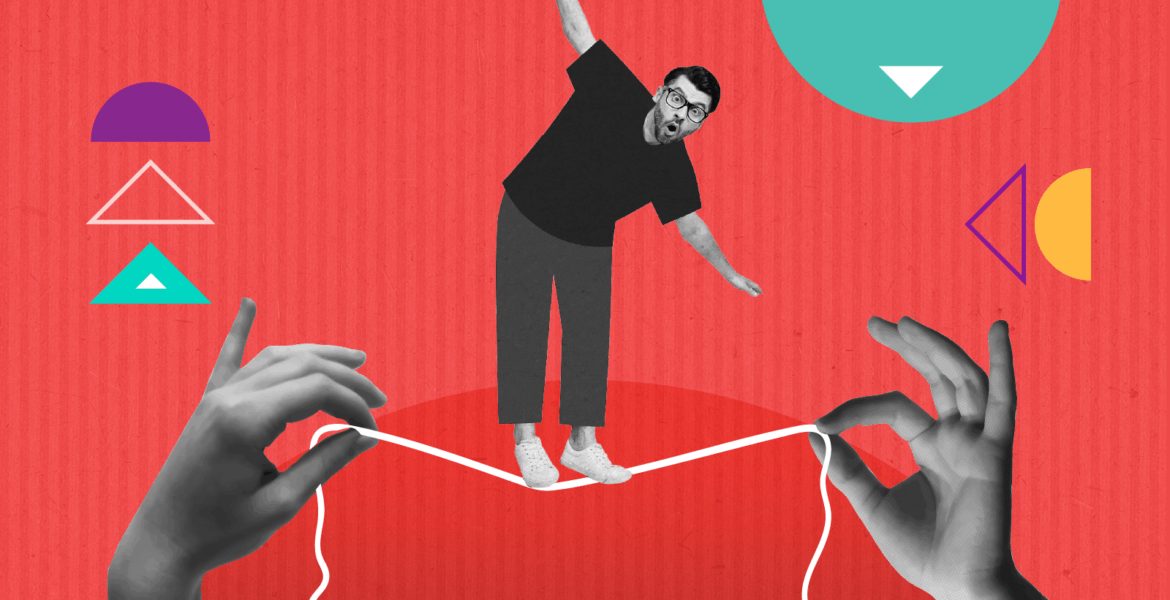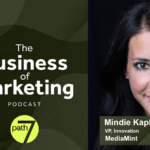By Yulia Chalykh, Partnerships Lead, Hunch
The modern marketer is a tightrope walker. One wrong move and it’s game over. The promise of automation — faster workflows, personalized ads at scale, more markets, more channels, more…everything — is tantalisingly in reach. But stray too far to the wrong side and you risk losing the emotional connection we’re all chasing as advertisers, as humans; that moment when a customer thinks, “This ad really gets me.”
Thanks to AI and creative automation, we’ve got more power at our fingertips than ever before. We can build thousands of personalized creatives, align them to local contexts, and launch campaigns in a fraction of the time it used to take. But the catch is that if we lean too far into efficiency, we risk losing the spark that brought us here in the first place. Because when brand stories feel too robotic or generic, people check out, and even a perfectly targeted ad falls flat if it feels ‘soulless’.
Emotion is essential: scaling smart doesn’t mean sounding the same
Automation has opened up incredible possibilities for marketing teams. But with great power comes great risk of sounding like every other brand in the feed.
We’ve all seen the “personalized” ads that technically tick all the right boxes — right product, right location, right timing — but that completely miss the mark emotionally. It’s like getting a birthday card addressed to you but written by a stranger who’s only ever seen your LinkedIn profile. Technically correct, but not meaningful or memorable.
The problem is, when we automate everything without thought, we forget that audiences are humans first. And humans, as it turns out, still respond best to stories that feel real, timely, and relevant. A 2023 study by Kantar and Affectiva found that digital ads which evoke strong emotions are four times more likely to drive long-term brand equity than those with weaker emotional connections. In short: feelings still sell.
So how do we keep the emotional heartbeat of our campaigns alive while cranking up the scale?
Context is queen
The truth is that creative automation doesn’t have to water down originality. In fact, when done well, it’s the opposite.
Let’s say you’re selling barbecue grills and your ads perform best on sunny days. With the right creative automation tools and data feeds in place, you can deliver ads with sunny visuals, targeted only to regions where the forecast matches. Or you can tailor copy to local slang, reference a neighborhood event, or tweak the visuals to fit the culture of each market. Suddenly, you’re not just showing up in the right place, at the right time, and with the right message, but you’re also emotionally relevant to the audiences you’re reaching. That’s where the magic happens.
These kinds of context-driven stories prove to consumers you’re paying attention — and make it feel like you’re really there with them. And in an era where consumer trust is fragile, showing them you “get it” builds the kind of loyalty that performance metrics alone can’t capture.
Creative teams shouldn’t feel like they’re handing the wheel over to AI. Think of it more like giving the engine a turbo boost. The ideas still come from humans, but AI helps them reach further, faster, and with more precision. It’s an enhancement, not a replacement.
Connecting the dots between data, creative, and media
To make this work, brands need to stop treating their creative, media, and data teams like distant cousins. When those teams operate in silos, great ideas get lost, and inefficiencies pile up. But when they come together around shared insights and objectives, things click.
We’ve seen time and again that when creative ops are aligned with media strategy — and when both are powered by smart data — you get more than scale. You get smart scale. The kind that drives the bottom line while respecting the customer.
For many marketing teams, this means rethinking their workflows. It means setting up systems where feedback loops are fast, creatives are modular, and assets can be adapted on the fly. And yes, it means putting tools in place that automate the boring stuff so marketers can focus on the levers that actually move people.
The future is emotional (and efficient)
Marketers are increasingly under pressure to deliver more with less. But the brands that are winning aren’t just the ones with the fastest turnarounds. They’re the ones that stay human while moving fast.
Storytelling still matters. Probably more than ever. What’s changed is the way we tell those stories — how we package them, deliver them, and personalize them without losing their soul. That’s the real opportunity with creative automation and AI. Not just more assets, but better ones. Not just personalization, but relevance that actually lands, builds deeper customer relationships, and drives greater revenue.
So yes, let’s embrace the tools. Let’s make friends with automation. But let’s also keep the bar high because customers can spot a lazy ad from a mile away and they can feel when a brand actually cares. The most efficient ad campaign means nothing if it doesn’t resonate with your audience.
The goal isn’t just to be seen quickly. It’s to be remembered.




